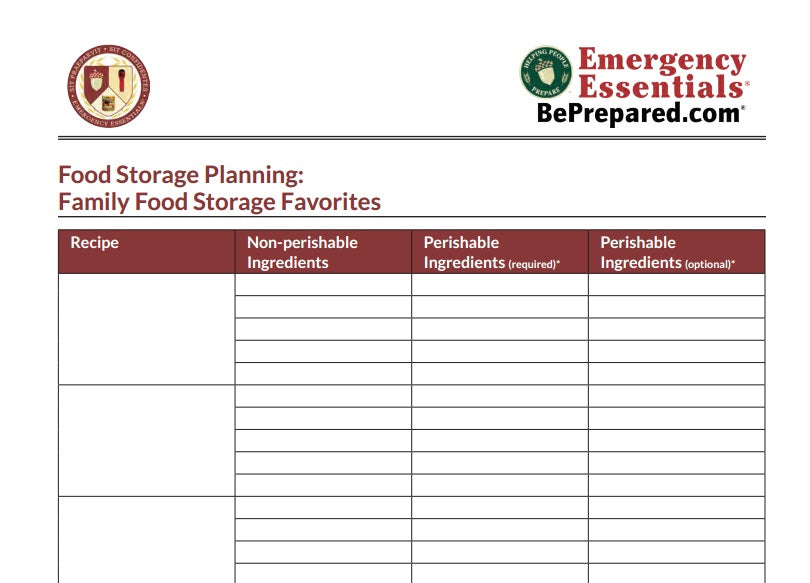Baby Steps: Plan a Food Storage Menu and Pick up a New Skill
Baby Step 1: Plan a Food Storage Menu
Not sure what foods to buy and store for your food storage supply? Here’s a helpful hint: if you don’t know what to store, try making a weekly or monthly food storage menu that includes your favorite family meals.
According to Leslie Probert, author of Food Storage in a Nutshell, if you plan a month’s worth of meals and then multiply it by 12, you’ll know exactly what you’ll need to buy to sustain your family for a year on food storage. So here are 4 baby steps on how to get started on your food storage menu.
Make a list of your favorite meals: Look at the recipes and ingredients for each of these meals and pull out your Emergency Essentials catalog or go online to beprepared.com. Search for the ingredients to make each of these meals out of our large selection of freeze-dried and dehydrated foods. Write these meals down on a calendar to keep track of them. You can use our Food Storage Menu Planner to keep track of your shopping list, monthly meal calendars, and food storage inventory. Just click on the picture below and start planning!
Create a short-term storage supply: Since not all food items can be preserved long-term, you may have to think about ways to change the recipes so that you can use food storage products. You may also want to think about creating a [short-term food storage] supply that includes items like vegetable oil, brown rice, and peanut butter. You can rotate these items regularly so that you can have them on hand if you’re in an emergency situation.
Purchase your supplies: You can gradually add supplies to your food storage, or you can get it all at once (year supply combos work well for this option). It’s up to you—do what works best for your situation. But keep in mind that it’s recommended to start with the basics—grains, legumes, dry milk, sugar, salt, oil, and garden seeds so that you can have the basic supplies to make a number of meals.
Start Cooking: Once you’ve purchased your supplies, start cooking with them to test out meals. This will not only show you what needs to be adjusted to make the recipes work, but it will also help your family to become familiar with eating freeze-dried and dehydrated foods before an emergency hits.
Baby Step 2: Try a New Food Storage Recipe or Technique
To go along with our food storage theme, consider learning how to cook with a food storage item that you are unfamiliar with or uncomfortable cooking. One item that may seem difficult to cook is wheat. Here are some resources to get you started if you want to learn how to cook with wheat:
Wheat Cookin’ Made Easy (DVD)
The Amazing Wheat Book
The Working with Wheat Combo
The Easiest Way to Use Wheat
Also, Food Storage in a Nutshell provides a very good list of the best ways to cook with freeze-dried and dehydrated foods so that you can preserve the nutrients in your food storage meals.
Stay tuned for our Baby Steps: Halloween Safety and DIY Costumes coming up later this week!
-Angela


4 comments
beprepared
atasteofcerole, that’s excellent! The better the organization, the less likely anything goes to waste. I’m still perfecting my system, but I’m getting there!
Sarah
atasteofcreole
Even on a tight budget we’ve managed to be stocked. Hubby loves organizing so he manages our storage like a grocery store. Its very easy to find items because of it.
Lyndia Ward
I’ve bought your food but didn’t know how to organize it. This might help
Diane
Wow this is wonderful never had a list so complete. Thank you so much for your hard work is pulling this together.